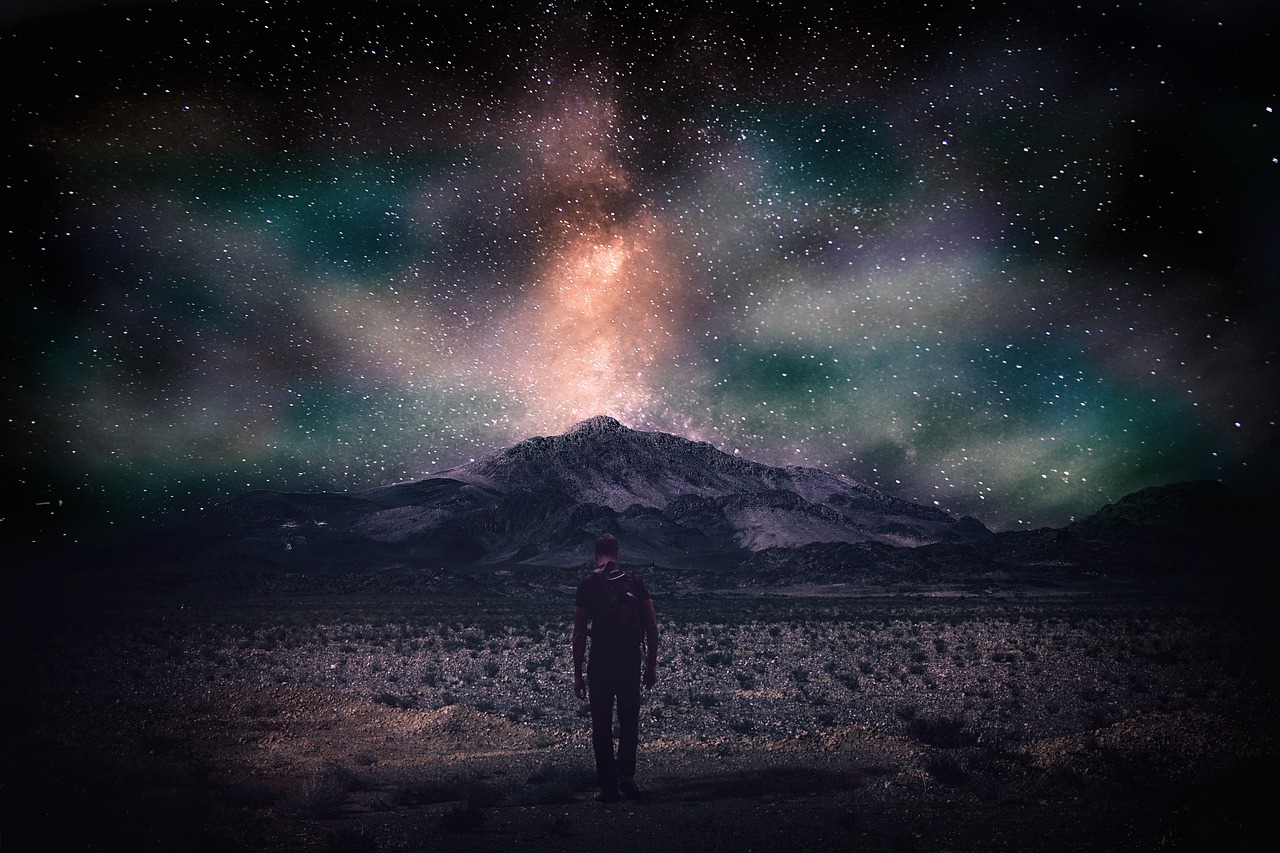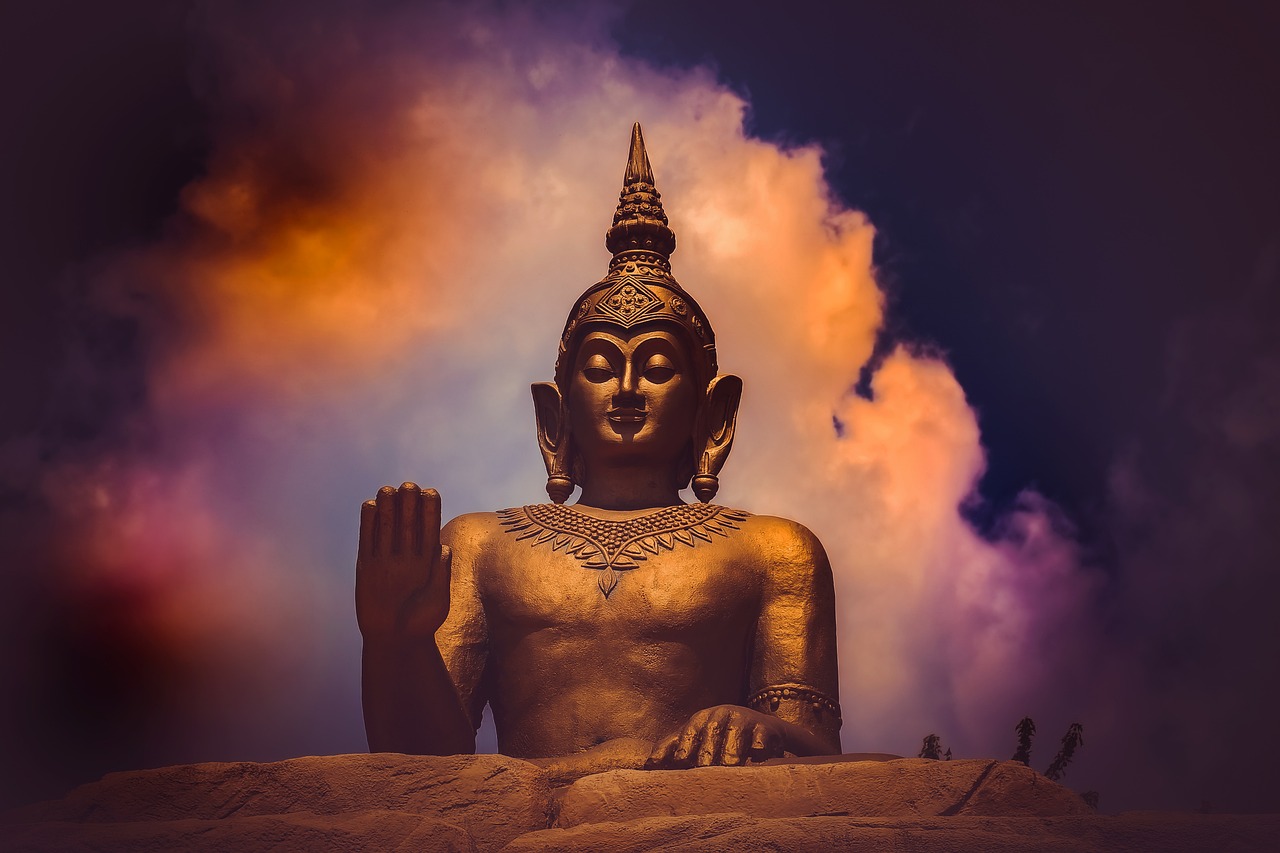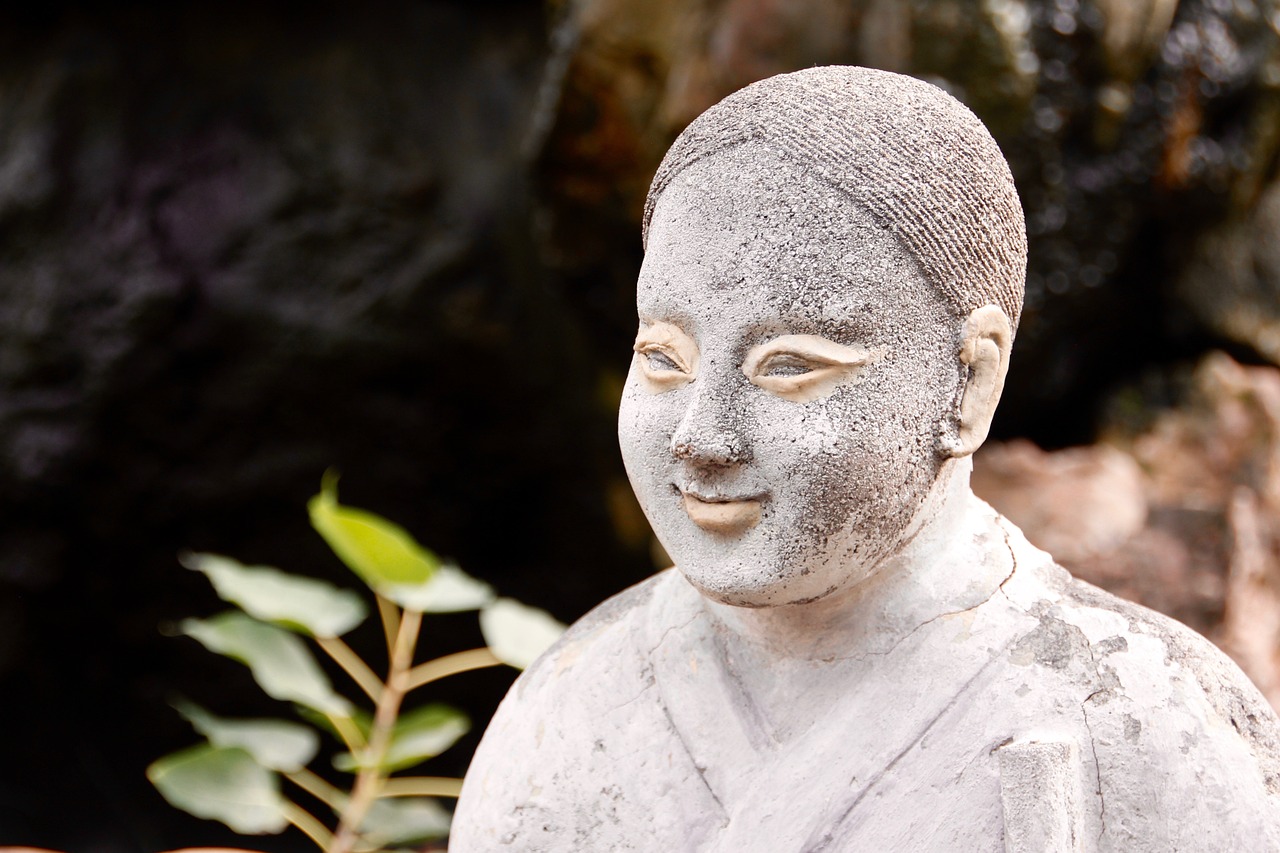Understanding Life and Death from a Metaphysical Perspective
Life and death are two of the most profound and enigmatic aspects of our existence. They shape our experiences, influence our beliefs, and ultimately define our understanding of reality. But what if we told you that these concepts are not merely biological events but rather intricate phenomena that can be examined through a metaphysical lens? This article aims to unravel the complexities surrounding life and death, exploring their meanings and implications as seen through various philosophical and spiritual frameworks.
At first glance, life seems like a straightforward journey from birth to death. However, when we dig deeper, we uncover a tapestry of interpretations that challenge the simplicity of this view. Metaphysics, the branch of philosophy that deals with the fundamental nature of reality, encourages us to ask questions such as: What does it mean to exist? Is there a purpose to our lives? And what happens after we die? These inquiries lead us down a rabbit hole of philosophical thought, where we encounter diverse perspectives that can either enlighten or confuse us.
One of the most captivating aspects of this exploration is the concept of the soul. Across cultures and religions, the soul is often seen as the essence of a person, a spark of divinity that transcends physical existence. But how does this idea relate to our understanding of life and death? Is the soul immortal, or does it perish alongside the body? These questions have sparked debates for centuries, and different philosophies offer varying answers that can significantly impact how we view our lives and the inevitability of death.
As we delve into the philosophical debate between dualism and monism, we find ourselves at a crossroads. Dualism posits that the body and soul are distinct entities, leading us to consider the implications of an afterlife and the possibility of consciousness existing independently of the physical form. On the other hand, monism suggests that everything is interconnected, blurring the lines between the physical and the spiritual. This perspective invites us to reflect on how our actions in life resonate beyond our mortal existence, emphasizing the continuity of being.
In this exploration, we will also touch upon various spiritual perspectives on life and death. From the teachings of Buddhism, which embrace the cycle of rebirth, to the Christian belief in eternal life, these spiritual frameworks provide rich insights into how humanity grapples with the unknown. They offer us a way to find meaning in our experiences and comfort in the face of mortality, reminding us that life is a precious gift, and death is not an end but a transformation.
As we navigate through the cycle of life and death, we encounter the idea of reincarnation—a concept that has fascinated countless cultures throughout history. This belief suggests that our souls undergo a continuous journey, learning and evolving through various lifetimes. It shapes our attitudes toward moral responsibility, encouraging us to live with intention and mindfulness, knowing that our actions have consequences that extend beyond our current existence.
Finally, we must acknowledge the natural order of life and death. Nature itself operates on a cyclical basis, where death gives way to new life, creating a harmonious balance within ecosystems. This interconnectedness reminds us that we are part of a larger web of existence, and our lives, however fleeting, contribute to the ongoing story of life on Earth. Understanding this cycle can help alleviate the fear of death, allowing us to embrace it as a natural part of our journey.
- What is the metaphysical view of life? The metaphysical view of life examines existence beyond the physical realm, exploring the nature of being and consciousness.
- How do different cultures perceive the soul? Various cultures have unique interpretations of the soul, often viewing it as the essence of a person that transcends physical existence.
- What are the implications of dualism and monism? Dualism suggests a separation between body and soul, impacting views on the afterlife, while monism emphasizes interconnectedness.
- What role does reincarnation play in understanding life and death? Reincarnation offers a perspective that life is a continuous journey, shaping attitudes toward moral responsibility and the significance of our actions.
- How does the natural order influence our understanding of mortality? The natural cycle of life and death illustrates the interconnectedness of all living beings, helping us see death as a part of life's continuum.

The Nature of Existence
When we ponder the question of existence, it's akin to standing at the edge of a vast ocean, gazing out at the infinite possibilities that lie beyond the horizon. What does it truly mean to exist? This question has captivated thinkers, philosophers, and everyday individuals alike for centuries. From the ancient Greeks to modern existentialists, the discourse surrounding existence is rich and complex, filled with diverse interpretations and profound insights.
At its core, existence can be viewed through multiple philosophical lenses. For instance, existentialism posits that existence precedes essence, meaning that individuals create their own meaning and purpose through their choices and actions. On the other hand, essentialism suggests that there is a predetermined essence that defines what it means to be human. This dichotomy raises intriguing questions: Are we mere products of our environment, or do we possess an intrinsic essence that guides our existence?
Moreover, the concept of existence is not limited to human experience alone. The universe itself, with its stars, planets, and galaxies, begs the question of its own existence. Why does anything exist at all? Some philosophers argue that existence is a fundamental aspect of reality, while others suggest that it is a mere illusion, a trick of perception. This leads us to consider the implications of our existence on a cosmic scale.
To further understand the nature of existence, we can explore the idea of being versus non-being. Being is often associated with consciousness, awareness, and the ability to experience life, while non-being is viewed as the absence of these qualities. This dichotomy can be illustrated in the following table:
| Aspect | Being | Non-Being |
|---|---|---|
| Consciousness | Present | Absent |
| Experience | Rich and varied | Null |
| Essence | Defined by choices | Undefined |
As we delve deeper into the nature of existence, we also encounter the concept of interconnectedness. Everything in the universe is linked, from the smallest atom to the largest galaxy. This interconnectedness suggests that our existence is not isolated but rather part of a larger tapestry of life. Imagine a spider web: each strand is vital to the web's integrity, and if one strand is removed, the entire structure is affected. Similarly, our actions and choices ripple through the fabric of existence, impacting not only our lives but also the lives of others.
In conclusion, understanding the nature of existence is a multifaceted journey that intertwines philosophy, spirituality, and personal reflection. It challenges us to consider our place in the universe and the significance of our choices. As we explore these profound questions, we begin to grasp the intricate dance of life and death, and how they are inextricably linked in the grand scheme of existence.

The Concept of the Soul
The concept of the soul is one of the most profound and captivating ideas in metaphysical discussions. It serves as a bridge between the tangible world we inhabit and the intangible realms of existence that many believe lie beyond our physical perception. Across cultures and philosophies, the soul is often viewed as the essence of being, a spark of divine energy that animates the physical body. But what exactly is the soul? Is it merely a construct of human imagination, or does it have a real, significant presence in our lives?
In many traditions, the soul is considered the core of our identity, the part of us that transcends our physical form. For instance, in Eastern philosophies such as Hinduism and Buddhism, the soul is often associated with the idea of atman or consciousness, which is believed to be eternal and undergoes cycles of rebirth until it reaches enlightenment. This perspective encourages individuals to live virtuous lives, as their actions in this life will directly impact their future incarnations. In contrast, Western philosophies, particularly those influenced by Christianity, often view the soul as a gift from God, imbued with the capacity for love, morality, and eternal existence in the afterlife.
Furthermore, the soul is frequently linked to the concept of consciousness. Many wonder: if consciousness is a product of the brain, what role does the soul play? This question leads us to two significant philosophical debates: dualism and monism. Dualists argue that the soul and body are separate entities, suggesting that the soul continues to exist even after physical death. On the other hand, monists believe that the soul and body are interconnected, implying that our physical experiences shape our spiritual essence. This dichotomy raises intriguing questions about the nature of reality and our understanding of life and death.
To further illustrate the varying interpretations of the soul, consider the following table that summarizes different cultural beliefs:
| Culture | Concept of the Soul | Afterlife Beliefs |
|---|---|---|
| Hinduism | Atman, an eternal soul | Reincarnation until moksha (liberation) |
| Buddhism | Consciousness without a permanent soul (Anatta) | Rebirth until enlightenment is achieved |
| Christianity | Immortal soul created by God | Eternal life in Heaven or Hell |
| Islam | Ruh, a divine breath | Judgment Day leading to Paradise or Hell |
Each belief system provides a unique lens through which we can explore the soul's significance. For example, the idea of reincarnation in Hinduism and Buddhism emphasizes the importance of moral actions and spiritual growth. In contrast, the views held in Christianity and Islam focus on the soul's relationship with God and the consequences of one's earthly life. This rich tapestry of beliefs invites us to ponder our own understanding of the soul and its implications for our lives.
Ultimately, the concept of the soul is not just a philosophical discussion; it is deeply personal. It compels us to ask ourselves: What do we believe happens after we die? How do our actions in this life resonate with the essence of our being? These questions lead us to a deeper exploration of existence itself, urging us to consider the interconnectedness of all life. By understanding the soul, we can better appreciate the intricate dance of life and death and the profound mysteries that lie beyond our current understanding.
- What is the soul? The soul is often viewed as the essence of a person, representing their consciousness and identity beyond the physical body.
- Do different cultures have the same understanding of the soul? No, various cultures interpret the soul differently, with beliefs ranging from reincarnation to eternal life in an afterlife.
- What is dualism? Dualism is the philosophical view that the soul and body are separate entities, while monism believes they are interconnected.
- How does the concept of the soul affect our understanding of life and death? The belief in the soul influences how individuals approach morality, existence, and the afterlife, shaping their actions and attitudes toward life and death.

Dualism vs. Monism
When we dive into the philosophical debate of dualism versus monism, we're essentially peeling back the layers of what it means to exist. Dualism, championed by thinkers like Descartes, posits that the mind and body are two distinct entities. This perspective suggests that our physical form is separate from our consciousness, leading to fascinating implications about life after death. Imagine a puppet and a puppeteer; the puppet (our body) moves only when the puppeteer (our soul or mind) pulls the strings. This separation can offer comfort to those who ponder what happens when we die—perhaps our essence simply moves on, detached from its physical vessel.
On the other hand, monism takes a different approach, arguing that everything is interconnected. This philosophy sees mind and body as two sides of the same coin, intricately woven into the fabric of existence. Think of it like a river flowing continuously; the water (our consciousness) and the riverbed (our physical body) are inseparable, continuously shaping and being shaped by one another. This perspective invites us to consider that life and death are not endpoints but rather transitions within a larger continuum. In monism, the death of the body does not signify the end of existence but rather a transformation, a shift into a different state of being.
The implications of these two viewpoints are profound. For dualists, the idea of an afterlife is often more tangible, as the soul is seen as capable of existing independently of the body. This belief can shape moral behavior—if one believes in a soul that continues after death, they might be more inclined to live a life of virtue, hoping for a favorable afterlife. In contrast, monists might argue that our actions in this life are all that matter, as everything is interconnected and the cycle of life and death is a natural part of existence. This interconnectedness fosters a sense of responsibility towards all living beings, as the monistic view emphasizes that harming another is, in essence, harming oneself.
Ultimately, the debate between dualism and monism invites us to reflect on our own beliefs about existence, consciousness, and what it means to truly live. Are we merely bodies with a soul, or are we expressions of a single, unified reality? Each perspective offers valuable insights into the complex tapestry of life and death, challenging us to explore our understanding of reality and our place within it.

Implications of Dualism
When we dive into the fascinating world of dualism, we find ourselves grappling with some profound implications regarding our understanding of existence. Dualism, at its core, posits that the body and the soul are distinct entities, each playing a unique role in the grand tapestry of life. This separation raises questions that echo through the corridors of philosophy, spirituality, and even science. For instance, if the soul is independent of the body, what does that mean for our consciousness and our experiences during life? Are we merely physical beings, or is there something deeper that transcends our corporeal existence?
One of the most compelling implications of dualism is its impact on the concept of life after death. If we accept that the soul exists separately from the body, the notion of an afterlife becomes not just a possibility but a fundamental aspect of our existence. Many philosophical traditions, including those found in Western thought, suggest that the soul continues on its journey after the physical body ceases to function. This perspective can be both comforting and daunting, as it challenges us to consider the nature of our actions and their repercussions beyond our earthly lives. Imagine living with the awareness that your soul is on a continuous journey, navigating through various experiences and lessons, shaping your essence through every life lived.
Moreover, dualism invites us to reflect on the nature of reality itself. If the body and soul are separate, we must confront the question: what is the true nature of our reality? Are we living in a purely material world, or is there a spiritual dimension that influences our experiences? This dualistic view opens the door to various interpretations of existence, leading to a richer understanding of our place in the universe. It encourages us to explore the unseen forces that may govern our lives, prompting inquiries into the spiritual realms and the interconnectedness of all beings.
However, the implications of dualism are not without their criticisms. Some argue that this separation can lead to a disconnection from our physical selves, promoting a neglect of the body in favor of the soul. This perspective can manifest in various ways, such as the devaluation of physical health or the belief that spiritual pursuits are inherently superior to earthly experiences. In this light, dualism can create a dichotomy that may hinder our ability to fully embrace the richness of life in all its forms.
In summary, the implications of dualism are vast and multifaceted. They challenge us to rethink our understanding of life, death, and the very essence of existence. As we navigate these complex ideas, we are reminded of the delicate balance between body and soul, urging us to seek harmony in our experiences. This exploration not only enriches our philosophical discourse but also shapes our spiritual journeys, inviting us to ponder the mysteries that lie beyond our immediate perception.
- What is dualism? Dualism is the philosophical belief that the mind and body are separate entities, each with its own distinct nature.
- How does dualism affect our understanding of life after death? Dualism suggests that the soul continues to exist independently of the body, potentially leading to beliefs in an afterlife.
- Are there criticisms of dualism? Yes, critics argue that dualism can lead to neglect of the physical body and create a disconnect between the mind and body.

Implications of Monism
The implications of monism are profound and far-reaching, influencing not only our understanding of life and death but also how we perceive our place in the universe. Monism posits that everything is interconnected, suggesting that the distinction between the mind and body, or the physical and spiritual, is an illusion. This perspective encourages a holistic view of existence, where every element of life is part of a larger tapestry. Imagine a vast ocean where every wave, while unique, is ultimately part of the same body of water. In this way, monism teaches us that our individual experiences are deeply intertwined with the collective experience of all beings.
One of the most significant implications of monism is the notion of continuity of existence. Unlike dualistic views that often imply a definitive end to consciousness at death, monism suggests that life is a continuous flow. This can lead to a more profound understanding of death—not as an end, but as a transformation. Just as a river flows into the sea, our consciousness may simply transition into another form of existence. This perspective can alleviate the fear of mortality, allowing individuals to embrace life with a deeper appreciation for the interconnectedness of all things.
Furthermore, monism promotes a sense of moral responsibility. If we are all part of a single, unified existence, the actions we take affect not only ourselves but also the larger whole. This interconnectedness fosters empathy and compassion, urging individuals to consider the impact of their choices on others. For instance, harming another being is akin to harming oneself, as we are all strands in the same web of life. This ethical framework encourages a more responsible and thoughtful approach to our interactions with the world around us.
In practical terms, the monistic view can manifest in various ways, from environmental stewardship to social justice initiatives. When we recognize that the health of our planet and the well-being of our fellow beings are intertwined, it becomes clear that our actions have consequences that ripple through the fabric of existence. This understanding can inspire collective action toward creating a more harmonious world.
To summarize, the implications of monism extend beyond philosophical discourse; they shape our understanding of life, death, and our responsibilities toward one another. By embracing the interconnectedness of all things, we can cultivate a life rich in meaning, compassion, and awareness. As we navigate our existence, let us remember that we are not isolated entities but rather integral parts of a greater whole.
- What is monism? Monism is the philosophical view that all things are interconnected and that distinctions between mind and body or physical and spiritual are illusory.
- How does monism affect our understanding of death? Monism suggests that death is not an end but a transformation, leading to a continuity of existence.
- What are the ethical implications of monism? Monism promotes moral responsibility, as our actions affect the larger whole, encouraging empathy and compassion.
- Can monism influence environmental practices? Yes, recognizing our interconnectedness can inspire actions that protect the environment and promote sustainability.

Spiritual Perspectives on Life and Death
When we dive into the realm of spiritual perspectives on life and death, we are navigating a profound and often mysterious landscape. Various cultures and religions have offered unique interpretations of these fundamental concepts, each providing a different lens through which we can understand our existence. For some, life is merely a temporary stage in a much larger journey, while for others, it is a singular experience that holds significant meaning. This diversity in thought not only enriches our understanding but also highlights the complexity of human beliefs.
In many spiritual traditions, life is viewed as a sacred journey. For instance, in Hinduism, life is often seen as a part of a continuous cycle of birth, death, and rebirth, known as samsara. Each life is an opportunity for the soul to learn and evolve, accumulating karma that influences future incarnations. This belief encourages adherents to live ethically and mindfully, as their actions in this life will resonate in the next. Similarly, Buddhism teaches that understanding the nature of life and death is essential for achieving enlightenment; the cycle of reincarnation can be transcended through spiritual awakening.
On the other hand, in many Western spiritual traditions, such as Christianity, life is often perceived as a gift from God, with death being a transition to an eternal life in the afterlife. This perspective instills a sense of hope and purpose, as believers anticipate a reunion with loved ones and a divine judgment that reflects their earthly actions. The concept of heaven and hell serves as a moral compass, guiding individuals to lead lives that align with their faith.
In addition to these religious frameworks, there are also more secular spiritual perspectives. Many people today identify with a form of spirituality that emphasizes personal growth and connection to the universe, often without strict adherence to traditional religious doctrines. This can include beliefs in the interconnectedness of all living things, where life and death are viewed as part of a larger tapestry of existence. Such perspectives encourage individuals to embrace life fully, recognizing that each moment is precious and that death is not an end, but rather a transformation.
To further illustrate the diversity of spiritual beliefs regarding life and death, consider the following table:
| Tradition | View on Life | View on Death |
|---|---|---|
| Hinduism | Cycle of birth, death, and rebirth (samsara) | Transition to another life based on karma |
| Buddhism | Opportunity for learning and enlightenment | Transcendence of the cycle through awakening |
| Christianity | A gift from God with a purpose | Transition to eternal life or judgment |
| Secular Spirituality | Personal growth and connection to the universe | Transformation and continuation of existence |
As we can see, the spiritual perspectives on life and death are as varied as humanity itself. Each belief system provides its followers with a framework to navigate the complexities of existence, offering comfort in the face of mortality. Whether through the promise of reincarnation, the hope of an afterlife, or the embrace of universal interconnectedness, these spiritual views help individuals find meaning in their experiences and foster a deeper understanding of their place in the cosmos.
In conclusion, the exploration of life and death through a spiritual lens reveals not just the differences in belief, but also the common threads that unite us all. Regardless of our individual perspectives, the search for understanding is a universal quest that shapes our lives and influences how we face the inevitable.
- What is the significance of spiritual beliefs in understanding life and death? Spiritual beliefs provide frameworks that help individuals make sense of their experiences and the mysteries surrounding existence.
- How do different cultures view the concept of the soul? Views on the soul vary widely, with some cultures seeing it as eternal and separate from the body, while others view it as interconnected with all living things.
- Can secular spirituality offer insights into life and death? Yes, secular spirituality emphasizes personal growth and interconnectedness, providing a meaningful perspective on existence without strict religious dogma.

The Cycle of Life and Death
The cycle of life and death is a profound concept that resonates through various cultures and philosophies. At its core, it speaks to the idea that life is not a linear journey but rather a cyclical process where endings lead to new beginnings. Just like the seasons change from spring to summer, autumn to winter, our lives follow a similar rhythm. This perspective invites us to contemplate the natural order of existence and our place within it.
In many traditions, life and death are viewed as two sides of the same coin. For instance, in Hinduism and Buddhism, the concept of reincarnation plays a crucial role in understanding this cycle. The belief is that when one life ends, the soul is reborn into another form, continuing its journey through various experiences. This cyclical view encourages individuals to live with intention, knowing that their actions have consequences that ripple through lifetimes.
Moreover, the natural world exemplifies this cycle beautifully. Consider the way trees shed their leaves in autumn, only to bloom again in spring. This interconnectedness of all living beings highlights how death is not an end but rather a transformation. Just as decomposition enriches the soil, paving the way for new growth, our lives contribute to the greater tapestry of existence. We are all part of this intricate web, where each thread is vital to the overall design.
To illustrate this, let’s take a look at a simple table that summarizes the cyclical nature of life and death across different cultures:
| Culture | Belief about Life and Death |
|---|---|
| Hinduism | Reincarnation and karma; life is a cycle of birth, death, and rebirth. |
| Buddhism | Life is a cycle of suffering; enlightenment breaks the cycle of rebirth. |
| Indigenous Cultures | Life and death are part of a natural cycle; ancestors continue to influence the living. |
| Western Philosophy | Views vary; some see death as an end, while others see it as a transition to another state of existence. |
This table highlights how different cultures interpret the cycle of life and death, each adding its unique flavor to the conversation. The diversity of beliefs underscores a common thread: the understanding that life is a continuum, deeply connected to death. This realization can be both comforting and enlightening, as it encourages us to embrace our mortality and view it not as something to fear, but as an integral part of our existence.
As we ponder the cycle of life and death, we may find ourselves asking questions that challenge our understanding of reality. What happens after we die? Is there an afterlife, or do we simply return to the earth? These questions have fueled countless discussions, inspiring art, literature, and philosophy throughout history. Ultimately, the answers may vary, but the journey of exploration is what enriches our experience of being alive.
- What is the significance of the cycle of life and death? The cycle reflects the natural order of existence, emphasizing that death is a transformation rather than an end.
- How do different cultures view reincarnation? Many cultures see reincarnation as a means for the soul to learn and grow through various lifetimes.
- Can understanding this cycle help us live better lives? Yes, recognizing our interconnectedness can inspire us to live more consciously and responsibly.

Reincarnation Beliefs
When we dive into the realm of , we find a tapestry woven with threads of history, culture, and spirituality. The idea that our souls may experience multiple lifetimes is not just a fascinating concept but also a profound way to understand our existence. Across various cultures, reincarnation serves as a lens through which individuals interpret life, death, and the moral responsibilities that accompany each existence.
In many Eastern religions, such as Hinduism and Buddhism, the belief in reincarnation is a foundational element. For instance, Hindus believe in the cycle of birth, death, and rebirth known as samsara. This cycle is influenced by one’s actions, or karma, in past lives. Good deeds may lead to a more favorable rebirth, while negative actions could result in a more challenging existence. This concept encourages individuals to live ethically and mindfully, knowing that their choices today can shape their future lives.
On the other hand, Buddhism teaches that the cycle of reincarnation is tied to the concept of suffering and the quest for enlightenment. The ultimate goal is to achieve Nirvana, a state beyond the cycle of rebirth, where one is liberated from suffering. Here, the emphasis is on understanding the nature of reality and transcending the self, rather than accumulating good karma for a better rebirth.
Interestingly, Western cultures have also shown fascination with the idea of reincarnation. While not as mainstream as in Eastern religions, concepts of past lives and reincarnation have found their way into New Age beliefs and some spiritual practices. Many individuals report experiences of past life regression, where they claim to recall memories from previous lives. This has led to a growing interest in exploring how these experiences could influence current behaviors and relationships.
To sum up, the beliefs surrounding reincarnation serve not only as a way to explain the mysteries of life and death but also as a moral compass guiding individuals toward a more mindful existence. By recognizing that our actions resonate beyond a single lifetime, we are encouraged to consider the broader implications of our choices. This interconnectedness fosters a sense of responsibility, urging us to contribute positively to the world around us.
As we explore these beliefs, it becomes clear that reincarnation is more than just a metaphysical concept; it is a profound reminder of the continuity of existence and the importance of living a life filled with purpose and compassion.
- What is reincarnation? Reincarnation is the belief that after death, the soul is reborn into a new body, continuing a cycle of life, death, and rebirth.
- Which religions believe in reincarnation? Major religions that embrace reincarnation include Hinduism, Buddhism, Jainism, and certain New Age spiritual movements.
- How does karma relate to reincarnation? Karma refers to the actions taken in past lives that influence the circumstances of future rebirths, determining one's experiences in the next life.
- Can past life experiences affect our current life? Many believe that unresolved issues or lessons from past lives can manifest in current behaviors, relationships, and challenges.

The Natural Order and Death
When we think about the natural order of life and death, it’s hard not to feel a sense of awe at the intricate web of existence that surrounds us. Every living being is part of a larger ecosystem, where the cycle of life and death plays a crucial role in maintaining balance. Just like the changing seasons, life and death are intertwined in a dance that has been going on for eons. But what does this really mean for us as individuals? How do we fit into this grand scheme?
At its core, the concept of the natural order suggests that death is not an end, but rather a transformation. It’s a necessary phase that allows for new life to emerge. Think about it: when a tree sheds its leaves in autumn, it does so to conserve energy and prepare for the harsh winter. This cycle of shedding and renewal is mirrored in our lives. When we lose someone, it can feel devastating, yet their energy and essence continue to influence the world around us.
In many cultures, death is viewed as a transition rather than a termination. For instance, in Indigenous cultures, there is often a profound respect for the dead, who are believed to become part of the earth, nourishing the soil and supporting new growth. This perspective encourages a reverence for life, urging us to appreciate the fleeting moments we have. It’s a reminder that every end is simply a new beginning in disguise.
The natural order also influences our understanding of mortality. Every creature, from the smallest insect to the largest mammal, plays a role in the ecosystem. When one organism dies, it provides sustenance for others, creating a cycle of life that is both beautiful and brutal. This interconnectedness emphasizes that we are all part of a larger whole, and our actions can have far-reaching consequences.
To illustrate this point, let’s consider a simple table that outlines the roles of various organisms in the natural order:
| Organism Type | Role in Ecosystem |
|---|---|
| Producers (e.g., plants) | Generate energy through photosynthesis, forming the base of the food chain. |
| Consumers (e.g., animals) | Feed on producers and other consumers, transferring energy through the food chain. |
| Decomposers (e.g., fungi, bacteria) | Break down dead organic matter, returning nutrients to the soil and completing the cycle. |
This table highlights how each type of organism contributes to the cycle of life and death. Without one, the others would struggle to survive. It’s a powerful reminder that our existence is not isolated; rather, it is part of a larger, interconnected web.
In conclusion, understanding the natural order and its relationship with death can profoundly impact how we live our lives. It challenges us to think about our place in the world and encourages us to cultivate a sense of responsibility towards the environment and each other. After all, we are all part of this magnificent cycle, and every action we take contributes to the ongoing story of life.
- What is the natural order? The natural order refers to the interconnected relationships and cycles that govern life and death in ecosystems.
- How does death contribute to the cycle of life? Death provides nutrients and energy for new life, supporting the ongoing cycle of existence.
- Why is it important to understand the natural order? Understanding the natural order helps us appreciate our role in the ecosystem and encourages sustainable living.
Frequently Asked Questions
- What is the metaphysical perspective on life and death?
The metaphysical perspective delves into the essence of existence, exploring what it means to be alive and the implications of mortality. It considers various philosophical viewpoints and spiritual beliefs that shape our understanding of life and death, emphasizing that these concepts are not merely biological but deeply intertwined with consciousness and the soul.
- How do different philosophies interpret the concept of the soul?
Different philosophies offer varied interpretations of the soul. For example, dualism posits that the soul is separate from the body, suggesting a distinct existence after death. In contrast, monism views the soul and body as interconnected, proposing that our essence is part of a larger, unified reality. These interpretations influence our beliefs about consciousness and what happens after we die.
- What are the implications of dualism on life after death?
Dualism suggests that the soul continues to exist independently of the physical body after death. This belief often leads to the notion of an afterlife or reincarnation, where the soul embarks on a new journey. It raises questions about the nature of consciousness and reality, prompting discussions about moral responsibility and the consequences of our actions in this life.
- How does monism influence our understanding of life and death?
Monism influences our understanding by emphasizing the interconnectedness of all existence. It posits that life and death are part of a continuous cycle, where death is not an end but a transformation. This perspective encourages a holistic view of existence, fostering a sense of unity with all living beings and a deeper appreciation for the natural order.
- What spiritual beliefs surround life and death?
Spiritual beliefs regarding life and death vary widely across cultures. Many religions offer interpretations of the afterlife, reincarnation, or spiritual evolution. These beliefs shape how individuals perceive their purpose in life and their relationship with mortality, often providing comfort and guidance in the face of death.
- What is the cycle of life and death?
The cycle of life and death refers to the natural process where living beings are born, live, die, and are reborn in various forms. This cyclical view underscores the idea that death is not the end but a transition, contributing to the ongoing flow of life. It highlights the interconnectedness of all organisms within ecosystems and the importance of each life in the grand tapestry of existence.
- How do beliefs in reincarnation affect attitudes towards life and death?
Beliefs in reincarnation can significantly impact how individuals view life and death. Those who believe in reincarnation may approach life with a sense of moral responsibility, understanding that their actions have consequences in future lives. This perspective often fosters a deeper appreciation for the present moment and encourages individuals to live in harmony with others and the environment.
- What role does the natural order play in understanding death?
The natural order plays a crucial role in our understanding of death by illustrating that it is a necessary part of life. Every organism contributes to ecological systems, and death facilitates the cycle of life, allowing for renewal and growth. Recognizing this interconnectedness can help individuals come to terms with mortality, viewing it as a natural and essential aspect of existence.



















